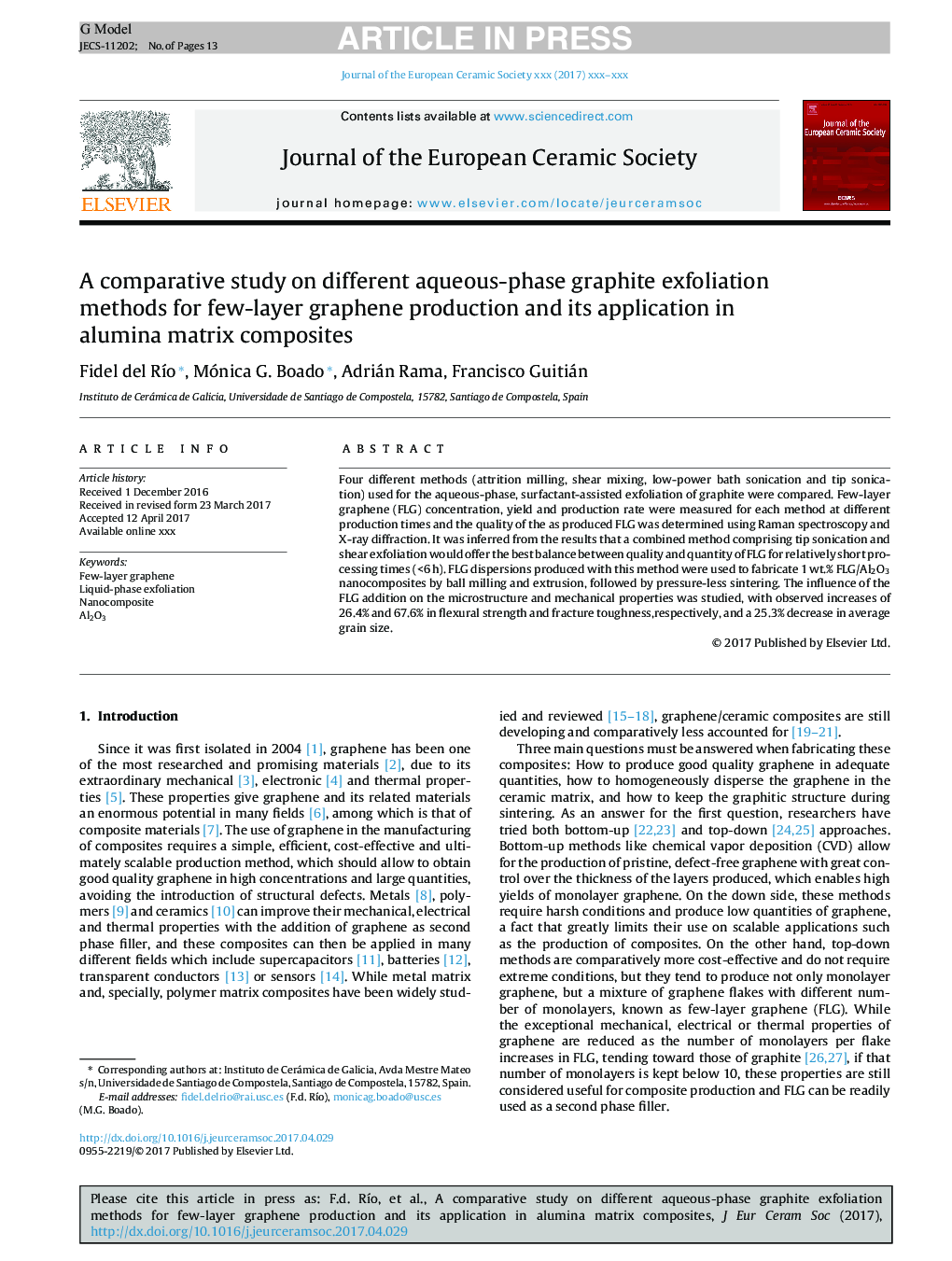| Article ID | Journal | Published Year | Pages | File Type |
|---|---|---|---|---|
| 5440587 | Journal of the European Ceramic Society | 2017 | 13 Pages |
Abstract
Four different methods (attrition milling, shear mixing, low-power bath sonication and tip sonication) used for the aqueous-phase, surfactant-assisted exfoliation of graphite were compared. Few-layer graphene (FLG) concentration, yield and production rate were measured for each method at different production times and the quality of the as produced FLG was determined using Raman spectroscopy and X-ray diffraction. It was inferred from the results that a combined method comprising tip sonication and shear exfoliation would offer the best balance between quality and quantity of FLG for relatively short processing times (<6Â h). FLG dispersions produced with this method were used to fabricate 1Â wt.% FLG/Al2O3 nanocomposites by ball milling and extrusion, followed by pressure-less sintering. The influence of the FLG addition on the microstructure and mechanical properties was studied, with observed increases of 26.4% and 67.6% in flexural strength and fracture toughness,respectively, and a 25.3% decrease in average grain size.
Related Topics
Physical Sciences and Engineering
Materials Science
Ceramics and Composites
Authors
Fidel del RÃo, Mónica G. Boado, Adrián Rama, Francisco Guitián,
